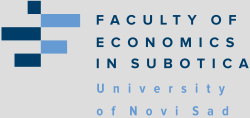Strategic Measures for Reducing Long-term Unemployment Among Youth in Serbia
DOI:
https://doi.org/10.46541/978-86-7233-386-2_31Keywords:
Youth, Unemployment, Labor market, SerbiaAbstract
Investing in youth and empowering them to enter the labor market as soon as they have finished their education has been shown to be one measure that a state may undertake to boost both its overall GDP as well as ensure that young professionals build healthy and long careers. In the last decade, Serbia has been battling a high unemployment rate for those 15 to 24 years of age. This group's high unemployment has hindered Serbia’s potential economic growth and as well as the career potential of its youth. It is therefore of strategic importance for the Republic of Serbia to endeavor to increase youth employment as much as feasibly possible. Serbia’s youth unemployment rate itself hit a peak in 2012 at approximately 50%. Since then, the situation has improved with some government intervention, such as the Republic of Serbia’s Youth National Strategy for 2015 to 2025, as well as work from international and local youth organizations. However, despite such advances in the labor market, Serbia still faces long-term youth unemployment. Statistics from 2019 show that 30% of those 15 to 24 years of age in Serbia are currently looking to be employed. To make matters worse, young people have no fast-track system in place in order to more effectively insert them into the labor market once their education or training has been completed, delaying wage growth, training and the injection of young human capital into the economy. On average, this age group in Serbia spends from one to one and a half years looking for a job. Compared to their counterparts in other countries within the European Union, according to the EU27, similar transition times from study into employment average six months. The paper will therefore present the current state of long-term unemployment in Serbia, targeting youth unemployment as its focus, analyzing data collected by the Statistical Office of the Republic of Serbia and Serbia’s National Employment Agency, comparing it against other studies within the wider literature. Based on the conclusions reached, the authors shall provide recommendations on how to better youth employment by finding measures that will ensure youth enter the labor market more effectively.



